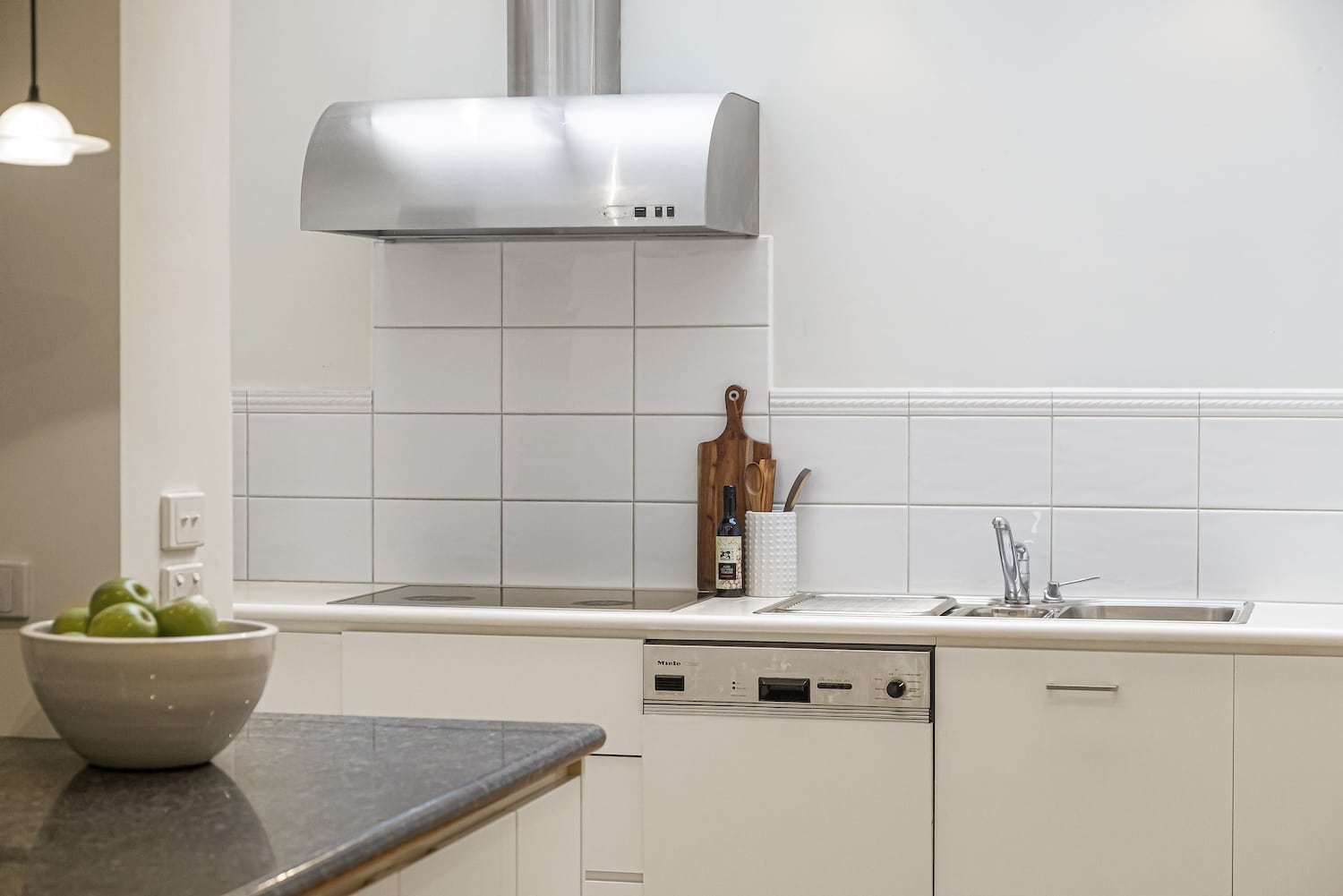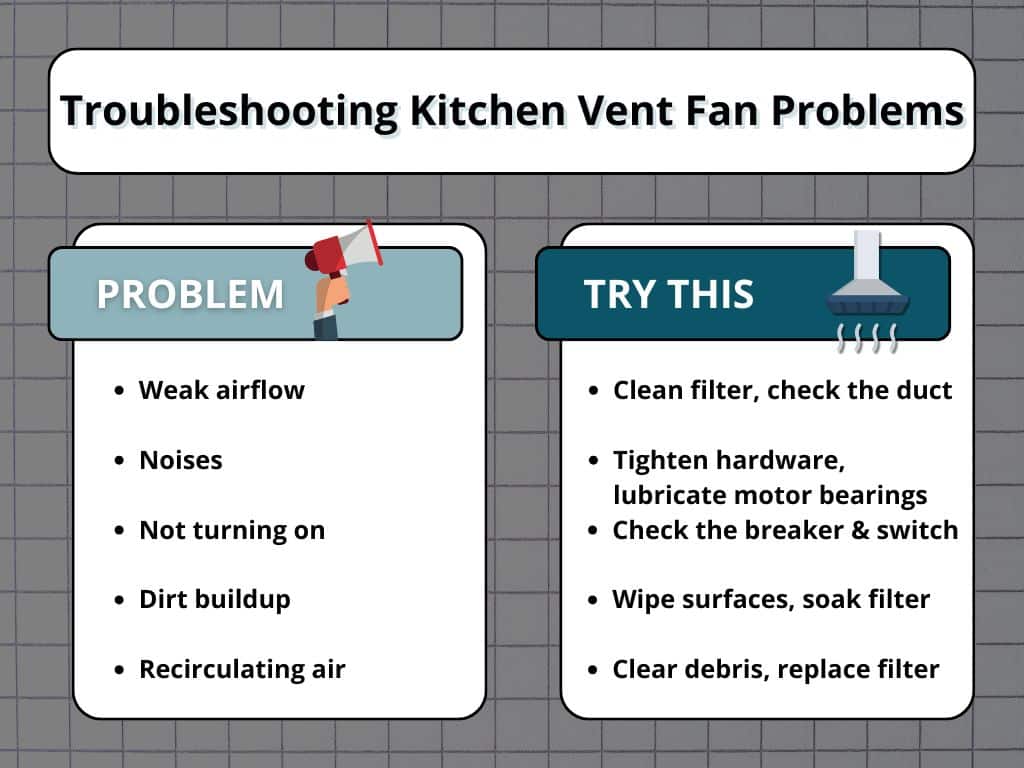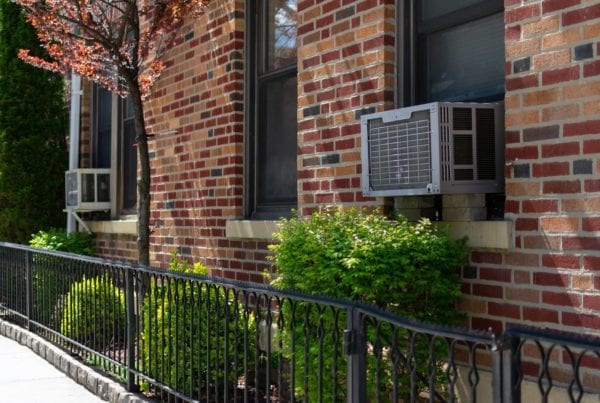
A kitchen ventilation fan should make life easier—clearing out smoke, odors, and grease so you can cook without worrying about lingering smells or stuffy air. But when it starts rattling, struggling to pull air, or refusing to turn on, it quickly becomes a frustrating problem.
Most kitchen ventilation fan problems have straightforward solutions—if you catch them early. This guide covers the most common issues, what causes them, and the best ways to fix them.
Signs Your Kitchen Ventilation Fan Has a Problem
A properly working kitchen ventilation fan improves air quality, reduces cooking odors, and prevents moisture buildup. When it stops doing its job, warning signs like these usually show up early.
- Your kitchen fills with steam or smoke despite running the fan
- Rattling, buzzing, or grinding sounds
- Smells stick around longer than they should
- The fan won’t turn on or stay on
- You notice grease on the fan, hood, or surrounding surfaces
- Excess moisture collects, or there’s visible mold or mildew nearby
Ignoring these signs can lead to bigger issues. The sooner you address them, the better your fan will function and the safer your kitchen will be.

Common Kitchen Ventilation Fan Problems (And How to Fix Them)
Even a well-maintained kitchen ventilation fan can run into problems. Below are the most common issues homeowners face, along with some possible solutions to restore your ventilation.
Weak or No Airflow
If your fan isn’t pulling air effectively, the cause is usually clogged filters, blocked ductwork, or a failing motor.
- Clean or replace the grease filters regularly, especially if you cook often.
- Check the duct for obstructions like grease buildup, nests, or debris.
- If airflow remains weak, the motor could be worn out and may need to be repaired or replaced.
Loud or Rattling Noises
Kitchen ventilation fans aren’t silent, but if yours suddenly gets louder or starts making unusual sounds, something may be loose or worn out.
- Tighten screws and mounting brackets to stop unnecessary vibration.
- Lubricate motor bearings if grinding or squeaking noises persist.
- If the fan blades appear damaged or off-balance, replacing them can restore proper operation.
Fan Not Turning On
If the fan doesn’t respond when you switch it on, the problem could be electrical.
- Check the circuit breaker and reset it if necessary.
- Test the wall switch—if it’s faulty, replacing it is a simple fix.
- If power is reaching the fan but it still won’t work, the motor or wiring may need professional attention.
Grease and Dirt Buildup
A dirty kitchen ventilation fan isn’t just an eyesore—it can restrict airflow and become a fire hazard.
- Wipe down the fan, hood, and surrounding surfaces with a degreasing cleaner.
- Soak metal filters in warm, soapy water or replace them if they’re too clogged.
- If grease has accumulated inside the ductwork, professional cleaning may be needed.
Ineffective Ventilation or Recirculating Air
Some kitchen fans are ducted to vent air outside, while others use charcoal filters to recirculate air. If your fan isn’t effectively removing smoke, grease, or odors, the problem may be with its ventilation system.
- If your fan is ducted, ensure the exterior vent is clear of debris and functioning properly.
- If you have a ductless system, replace the charcoal filter regularly to maintain effectiveness.
- If your fan struggles to clear the air, upgrading to a higher-capacity model may be necessary.

Other Recommended Maintenance
Keeping your kitchen fan in good shape is just one part of maintaining ventilation at home.
- Clean or replace filters quarterly – Grease and dust can clog filters, restricting airflow and making the motor work harder.
- Inspect ductwork for blockages – Grease and debris can build up inside vents, reducing efficiency and increasing fire risks.
- Check for proper ventilation throughout your home – Poor airflow in other areas, such as bathrooms or attics, can indicate hidden ventilation problems.
- Monitor moisture levels – If humidity or condensation builds up in your kitchen or other parts of your home, it may point to an issue with ventilation or insulation.
- Schedule routine home inspections – Regular inspections can catch problems early, from faulty exhaust systems to hidden structural damage.
When to Call a Professional
Some ventilation fan issues are easy to fix, but others signal a larger problem. Knowing when to bring in a professional can help prevent costly repairs and ensure your home stays safe.
Consider scheduling an inspection if:
- Your kitchen ventilation fan won’t turn on or keeps shutting off unexpectedly.
- The fan still makes loud or unusual noises after tightening or replacing parts.
- Airflow remains weak even after cleaning filters and checking for obstructions.
- Grease buildup inside ductwork is severe enough to increase fire risks.
- Your home has persistent moisture issues, mold growth, or signs of poor ventilation in multiple areas.
- You’re unsure whether your kitchen ventilation system meets local building codes.
- You’re planning renovations or upgrades and need expert advice on ventilation, air quality, or energy efficiency.
Conclusion
A kitchen ventilation fan plays a key role in keeping your home safe and comfortable. When it stops working properly, it can lead to lingering odors, excess moisture, and even fire hazards from grease buildup.
If you suspect ventilation troubles or other hidden issues in your home, call Alpha Building Inspections. Our experienced team can assess your home’s major systems to ensure safe and efficient function throughout.


